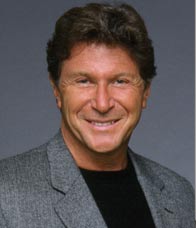|
Interview with Ken Dychtwald on Midlife Crisis
February 2009 - By Dr. Nagendra V Chowdary
 Ken Dychtwald
Ken DychtwaldKen Dychtwald, founding president and CEO of Age Wave 
What is middlescence all about?
Can you give us the background for
your research into employee attitudes
and experience?What was the trigger
point for this research?
“Middlescence” is a stage of life that is
emerging between “adulthood” and
“old age.” In the last century, we experienced
unprecedented increases
in life expectancy. For example, at the
beginning of the 20th century, the average
American citizen could expect
to live only 47 years. By the end of the
20th century, life expectancy in the
US had increased to 78.India has
seen farmore dramatic improvements
in life expectancy in the last century.
|
|
Due to high infant mortality, life expectancy
at birth in India in 1900 was
just 23. Today, India’s average life expectancy
at birth has risen to 65.With
longer lives and increased health and
vitality in our later years, we have begun
to postpone old age, and to create
a new middle zone of life, which I
have named “middlescence.” This
isn’t the first time we have seen a new
lifestage emerge. For example, the idea
of adolescence didn’t exist until relatively
recently. At the beginning of the
20th century, people would go from
being children to being adults virtually
overnight; there was nothing in
between. Then, as we began instituting
child labor laws and creating a
fuller high school experience, adulthood
was postponed. A sociologist
named Stanley Hall identified this
emerging new stage of life and called
it “adolescence.” When the baby
boom generation came along in the
1950s, we did it again, further postponing
adulthood by creating another
new stage of life called “young adulthood.”
Today, as people begin reaching their
fiftieth birthdays, they are no longer
turning the corner to old age as they
had done in our grandparents' time.
Instead, our “middlescent” years are
becoming a time of continued vitality
with an appetite for new beginnings,
new careers, and productivity. So
we’re not simply living longer, we’ve
invented a new life stage – with more
to come. People tend to assume that
living longer simply means being old
longer. Instead, I’m convinced that
our entire concept of how we live our
lives is shifting. This is an entirely
new landscape that we’ve never
charted before.
Our research into the attitudes and
experiences of today’s workers began
with the recognition of the growing
numbers, importance, and influence
of middlescent workers. Today, employers
are experiencing an unprecedented
shift in the age distribution of
the labor force. This phenomenon is
driven by the following three demographic
realities – the disproportionate
size of the baby boom generation,
increasing longevity, and declining
birthrates – that no organization can
ignore.
The baby boom
Nearly one-third of all Americans–76
million people- were born between
1946 and 1964. That’s a daily average
of over 10,000 births in the US, with
1,000 in Canada, and comparable
numbers across other major economies.
This fertile period was sandwiched
between the baby busts of the
Depression and World War II and the
Viet Nam era. At such numbers, the
boomer generation has repeatedly reshaped
American life and fueled
much of the productivity of the last
several decades. As boomers reach
traditional retirement age, how will
corporations survive themassive exodus
of skills, experience, customer relationships,
and knowledge – a real
brain drain? The longevity boom
Throughout most of human history,
the average life expectancy was less
than eighteen. A hundred years ago,
only 4% of the US population was
over sixty-five; now its 14% and rising.
Thanks to breakthroughs in
health care and other quality-of-life
advances, more people are living
longer. Consequently, all the milestones
of life are shifting upward.
When are we old? When are workers
no longer productive? At what age do
employees stop learning or seeking
new challenges? The birth dearth
After peaking at 3.7 in the mid-1950s,
the average number of children per
woman in the US has declined to 2.
Nearly 20% of baby boomers will
have no children, and another 25%
will have only one child. Declining
birthrates across industrialized nations
guarantee a recurrent shortage of
native-born young workers. Countries
with birthrates such as Italy’s
(1.2), Germany’s (1.3), and Japan’s
(1.4) are well below the replacement
rate of 2.1 children per woman. In India,
the birthrate has halved from almost
six children in the 1950s to
three children per family today.
These three factors drive what I call
the “age wave,” a massive shift in the
size and age distribution of the population.
As a result of this age wave,
major economies such as Japan, Italy,
Germany, China, France, and the UK
will begin to experience shrinking
working age populations in about a
decade. Unless birthrates or immigration
rates change radically, the German
workforce will decline by 25%
in 2050, the Italian by 30%, and the
Japanese by 38% in the first half of
this century. Throughout most of Europe,
including Russia and most of
the former Eastern Bloc, the pattern is
much the same. The age wave is destined
to reshape theworkforce and redefine
how organizations must recruit
and engage their employees.
Howcan organizations better engage a
growing number of middlescent
workers? How can they stem the
“brain drain” as massive numbers of
baby boomers prepare for retirement?
What are the unique motivations,
needs, worries, and hopes of the different
generations of workers? How can employees better appeal to and
motivate each generation? How can
organizations create and manage an
effectivemulti-generationalworkforce
in an era of unprecedented age diversity?
1.
Coca-Cola's Belgian Crisis Case Study
2. ICMR
Case Collection
3.
Case Study Volumes
|
